Leather is one of the oldest and most universal materials as far as fashion, accessories, and upholstery are concerned. You need to know types of leather it is so that you can get the right choice of leather depending on the style, the life span, and the comfort. People are asking themselves, “What kind of leather?” or “What types of leather are there? The fact is that it comes in too many varieties, and each of them has its own texture, quality, and finish.
And you are not alone in asking yourself how many types of leather there are, between high-quality full-grain leather and cheaper genuine leather or even faux leather, each of the leathers has its application and attributes. You need to buy jackets, shoes, furniture, or bags; you should possess generic information about the different kinds of leather to make a knowledgeable choice.
In this blog post, we’ll explore different leather types, leather finishes, and even how to care for them so your leather products last for years.
5 Different Leather Types and Their Uses
There are numerous grades and treatments of leather, which means that each type of leather can be used for a different purpose. Some of them are luxurious and long-lasting, whereas others have a price or a distinct style.
If you’re asking, “What are the 5 types of leather?” the main categories are full-grain leather, top-grain leather, genuine leather, split-grain leather, and bonded leather. But that’s just the beginning; there are also specialty leathers like suede, patent, faux, nubuck, and exotic leathers. Let’s take a closer look at these different types of leather and how they are used.
Full Grain Leather
Full-grain leather, among the other types of leather, is regarded as the highest quality leather. It is crafted using the very top of the hide, preserving the natural fiber. This renders it very wear-resistant. Full-grain, also, unlike other leather types, forms a rich leather patina as it is worn, and becomes even more characterful as it ages.
Premium jackets, belts, wallets, and furniture are usually made of full-grain leather. The best type of leather is it in case you appreciate long lifespan and natural charm. It has not been beaten up and modified, and so, it bears natural marks; every piece is the only one.
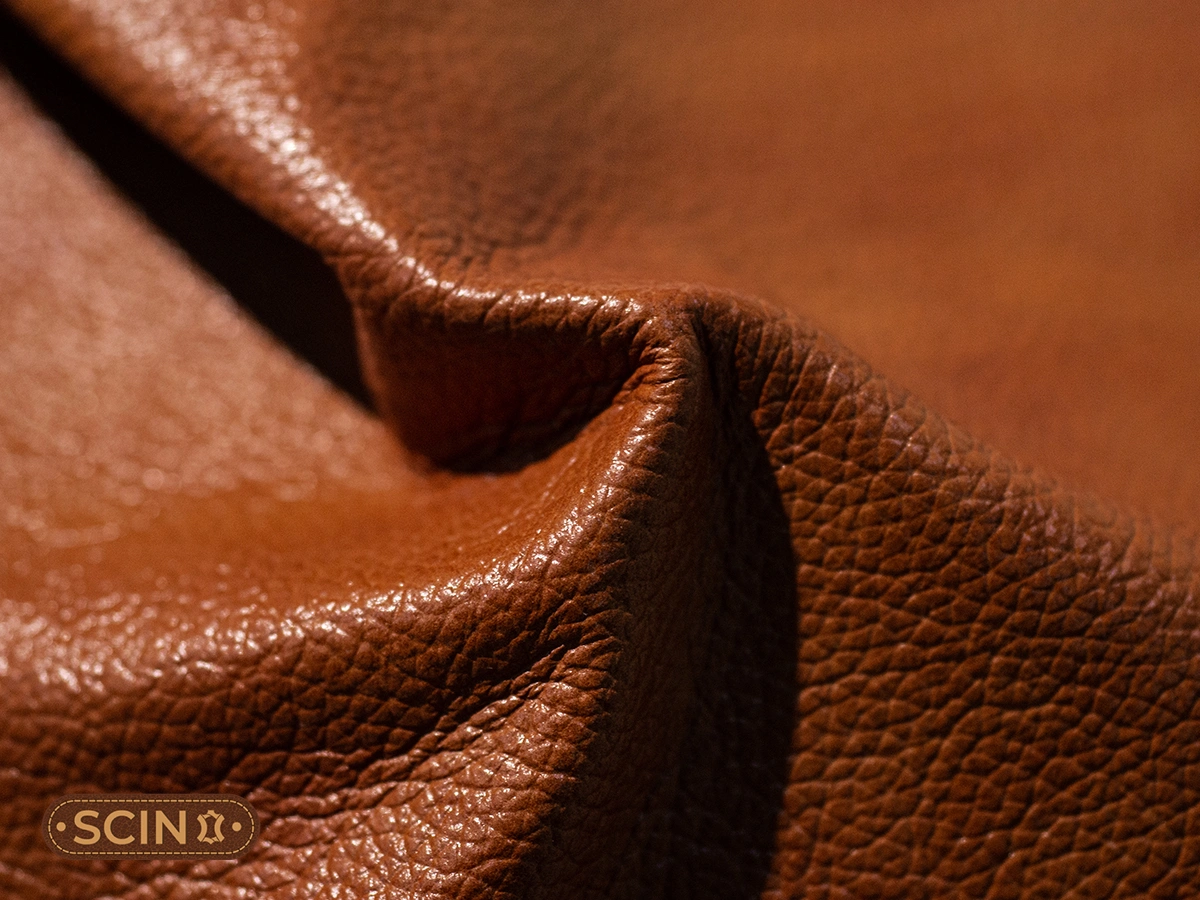
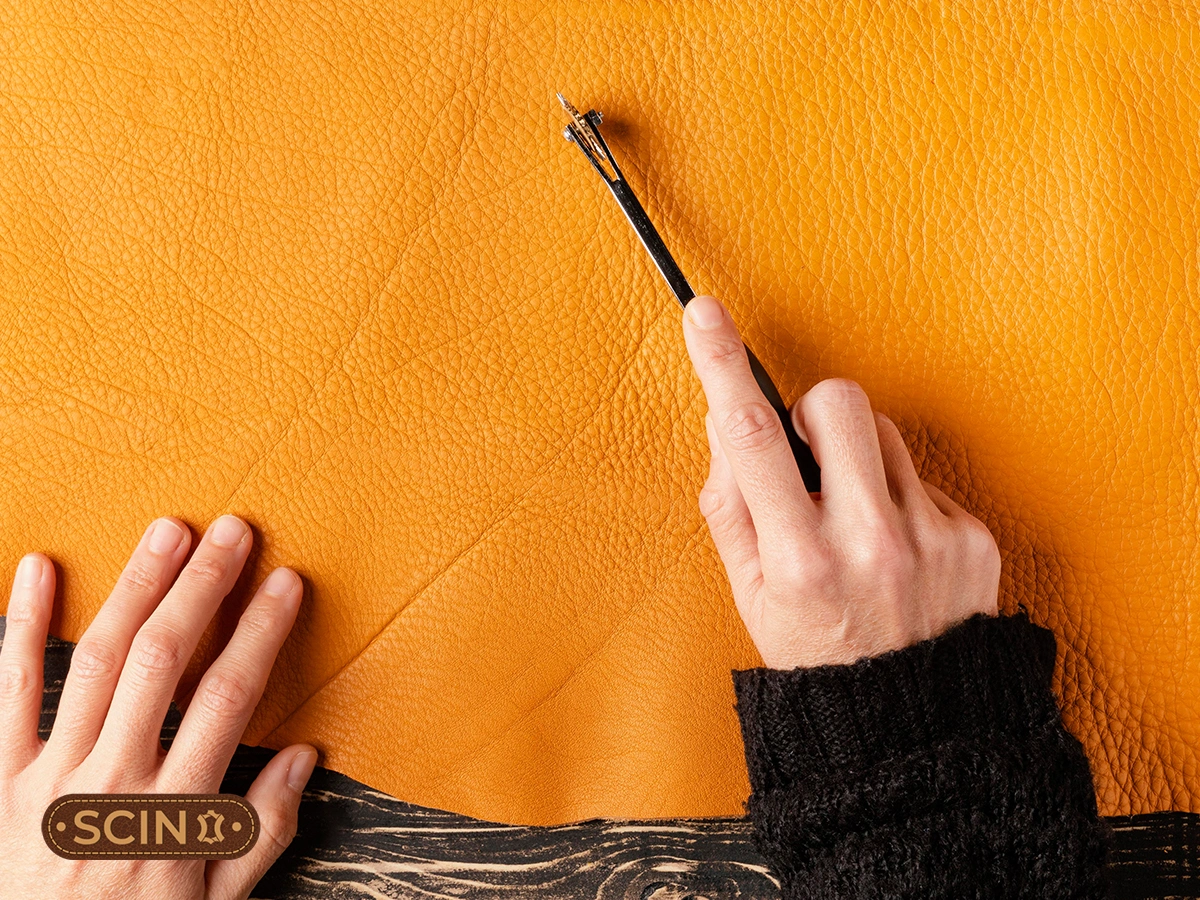
Top Grain Leather
The second-best grade is the top grain leather. It is cut out of the upper part of the hide but painted and smoothed to take away blemishes. This procedure makes it easier and more even compared to the full grain, but it loses a part of its durability.
This form of leather is mostly used in handbags, jackets, and shoes where a sophisticated appearance is necessary. It is not a developed patina, as well as that full grain, but it remains one of the most suitable types of leather when it comes to seeking a compromise between the luxurious and pocket-friendly.
Genuine Leather
Genuine leather is, in fact, a grade rather than its actual name of full and top grain. It is a crude product of the remnants of the hide, which are left to him who has stripped off the upper cuts. It is then worked on, painted, and embossed to appear more appealing.
This resurfaced type of leather is inexpensive and can be found in belts, shoes, and cheap jackets. Although it is not as permanent as increased grades, it is an opportunity to have the appearance of leather without paying the high price. In case you wonder, we have a guide on what is real leather.

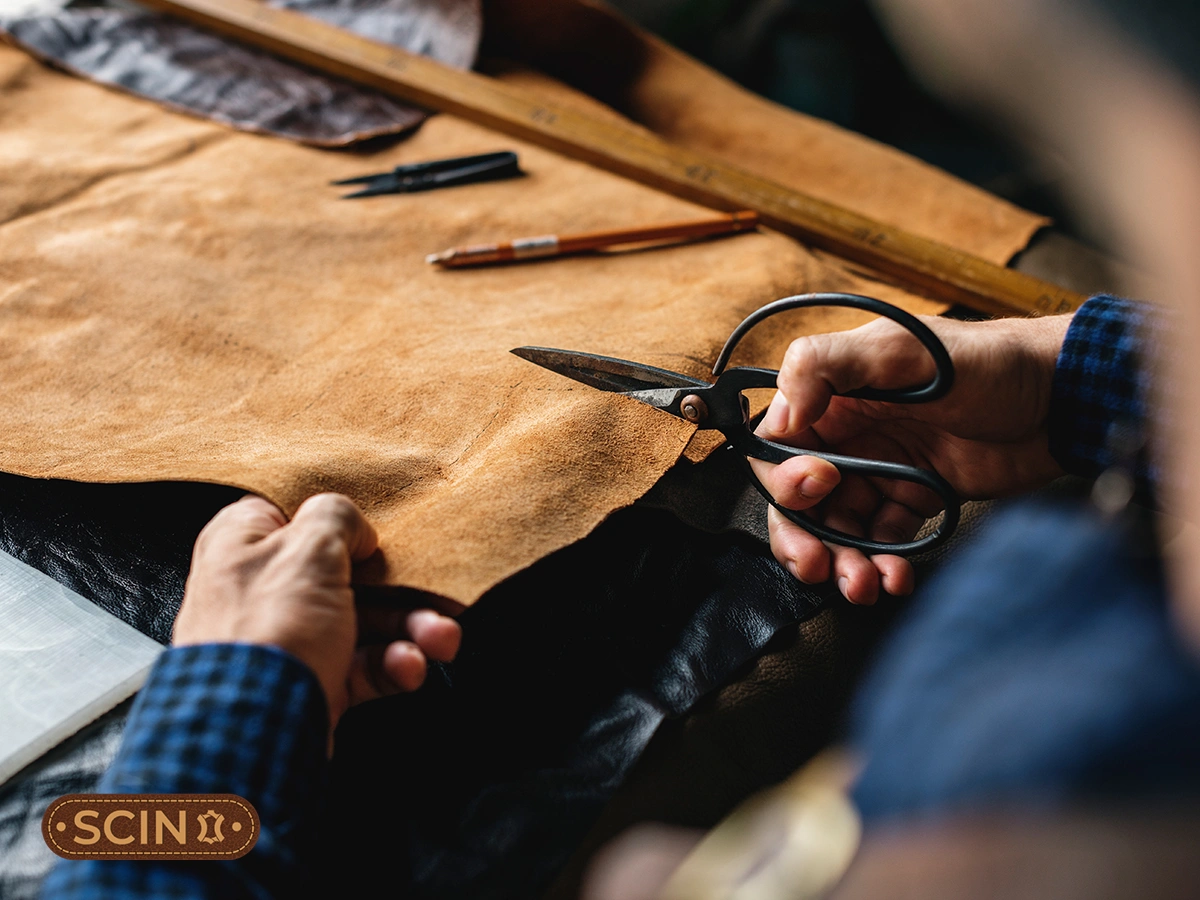
Split Grain Leather
Split grain leather is made out of the lower layers of the hide, thus being not so tough but not so durable. It is commonly applied to produce suede leather, which is a material with a velvety feel. Although not as robust as full grain or top grain, it enjoys appreciations based on its loveliness and individual feel.
It can be used in gloves, jackets, and other fashion accessories due to this type of leather being great. It is very comfortable and stylish, but it is more difficult to take care of to avoid any damage.
Bonded Leather
The bonded leather uses the scrap leather fiber that is bonded together using adhesives combined with a poly coating (polyurethane). It is a low-grade variety of leather amongst the different types of leather, yet it is also cheap.
One of the most common uses of this kind of leather is in furniture, cheaply produced belts, and book covers. Although this is not as durable, the appearance of leather is provided at a considerably cheaper rate. Bonded leather is the least costly in the affordable range. To anyone curious, how many types of leather are around the lower end?


Patent Leather
Its sleek appearance makes it popular for formal wear and trendy designs. When thinking about different types of leather finishes, patent leather is always at the top for shine and glamour.
It has a smooth look, which makes it attractive for being worn during formal occasions and in fashionable designs. Patent leather is always in the highest regard, when it comes to shine and glamour when considering different types of leather finishes.
Suede Leather
The suede leather material is the reverse of the debut on the back of the hide, which makes it have the softness of velvet. It is cozy, elegant, and less durable as opposed to other types of leather finishes.
In jackets, shoes, and bags, suede is worn very frequently. To keep suede soft and avoid stiffness, you can follow care tips similar to how to soften leather jacket. It needs special care since it can very easily be stained as well as damaged by water.

Faux Leather
Faux leather is an imitation material that is expected to resemble genuine leather. It is inhumane and is usually cheaper as a way of choice in the contemporary fashion industry. Faux leathers have numerous kinds, textures, and finishes.
It is a type of leather that is applied to jackets, furniture, and in car interiors. Read further to know more about what is faux leather in our blog. Although it is not as long-lasting as natural leather, it is also stylish and affordable without animal leather.
Exotic Leather
Exotic leathers such as crocodile, alligator, ostrich, and snake skin are used. These are luxurious and costly different types of leather that are mostly rare. They find their way in upscale accessories, shoes, and handbags.
The leather varieties of this category are characterized by different textures and patterns, which make them unique. Due to their individuality, they need special care and storage, just like tips on how to store leather jackets..
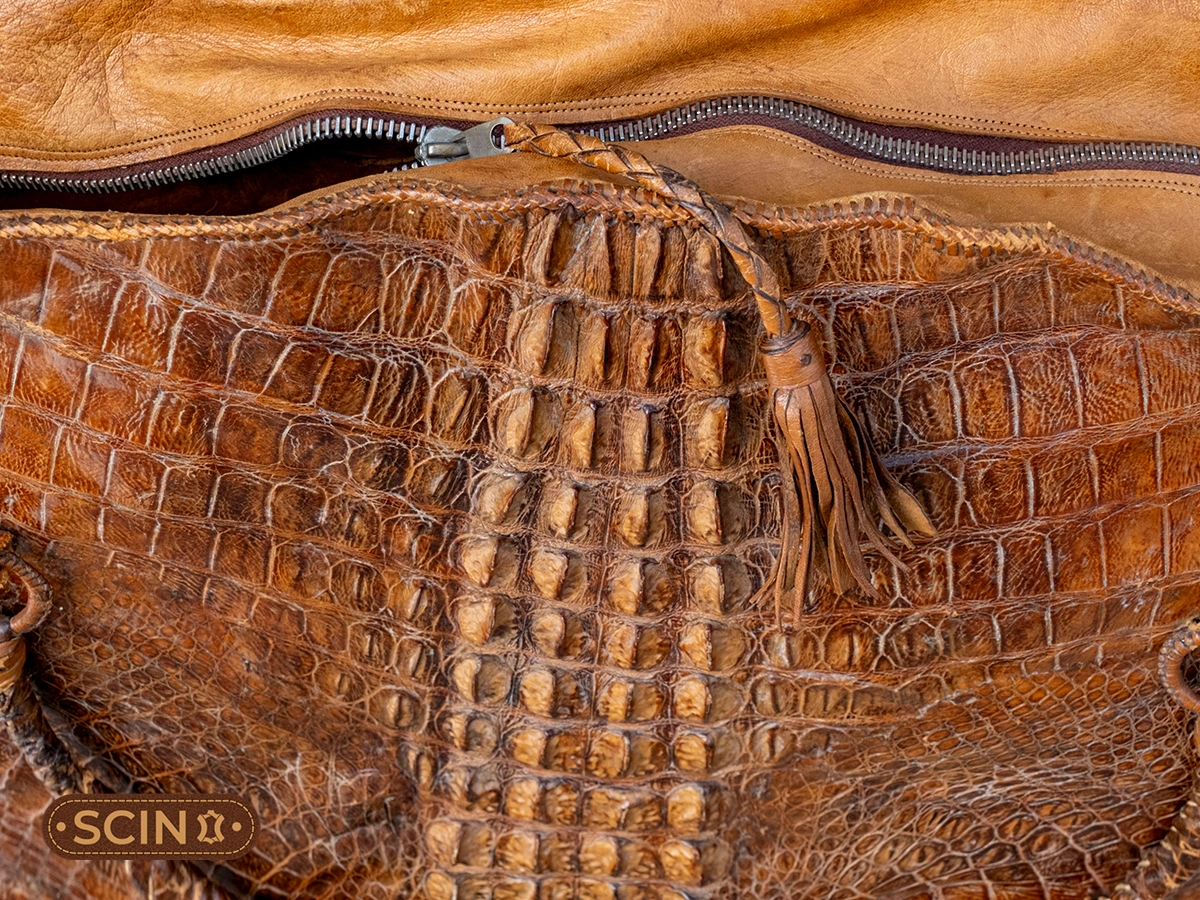

Nubuck Leather
Nubuck leather is made by sanding the outer surface of the hide, creating a soft, suede-like feel. It is stronger than suede and as delicate as compared to full grain. Nubuck is wearable in shoes, jackets, and accessories.
Being among the most comfortable but best types of leather, it is luxurious to touch. It also needs protection sprays to avoid staining because it picks up oils and dirt very easily.
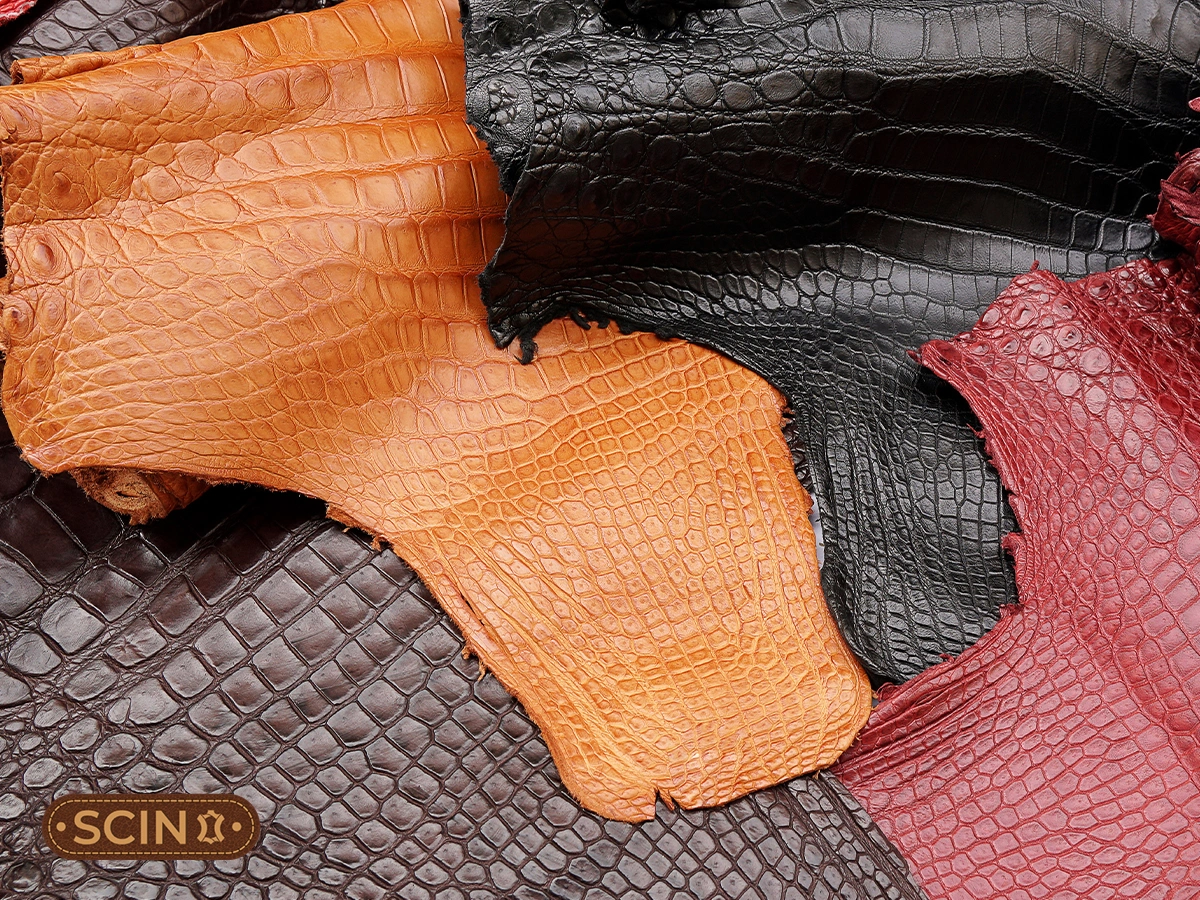
Types of Leather (Based on Animal Source)
It is not only that leather comes in different grades, but it also depends on the hide of the animal. When you are wondering, however, how many varieties of leather work, the response is plenty. From cowhide leather to sheepskin leather, each brings unique qualities.
This information on the different types of leather can help you select the appropriate leather to use in jackets, shoes, or furniture. These are the most widespread names of leather depending on the animal source.

Cowhide Leather
The most used and universal is Cowhide leather. It is coarse, sound, and is applicable to jackets, belts, shoes, and furniture. A large majority of the best types of leather are cowhide, as it is durable and flexible at the same time.
It is also the most popular option when it comes to leather jackets, and in most cases, they can be designed in various leather jacket colors so as to suit trends and the tastes and preferences of the individual using it.
Sheepskin Leather
Sheepskin leather is light, soft, and warm. Wool is commonly used for it, so it is suitable for winter jackets and coats. We also have a guide to types of wool.
It is a less strong cowhide type of leather; however, it is much valued for its comfort and insulation. It is the best option for stylish but practical fashion jackets.
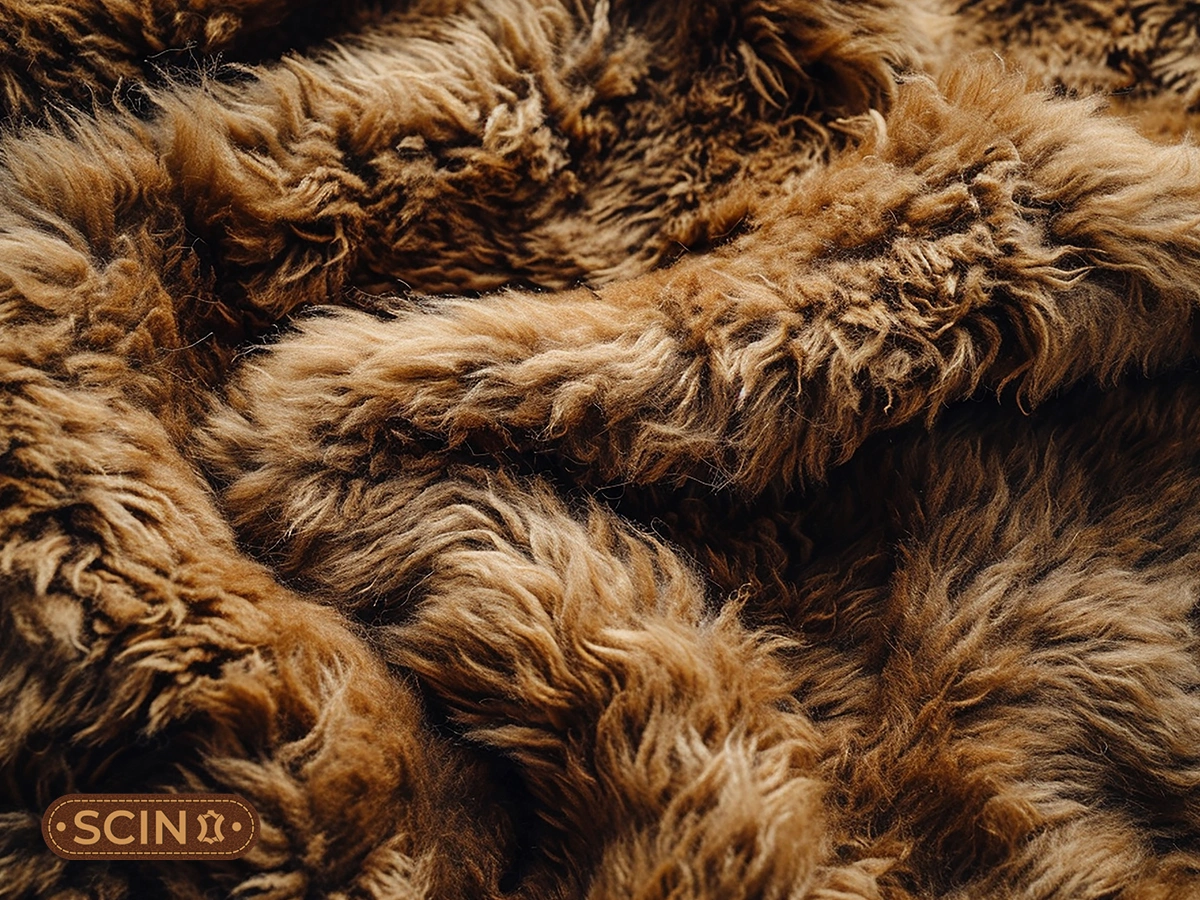
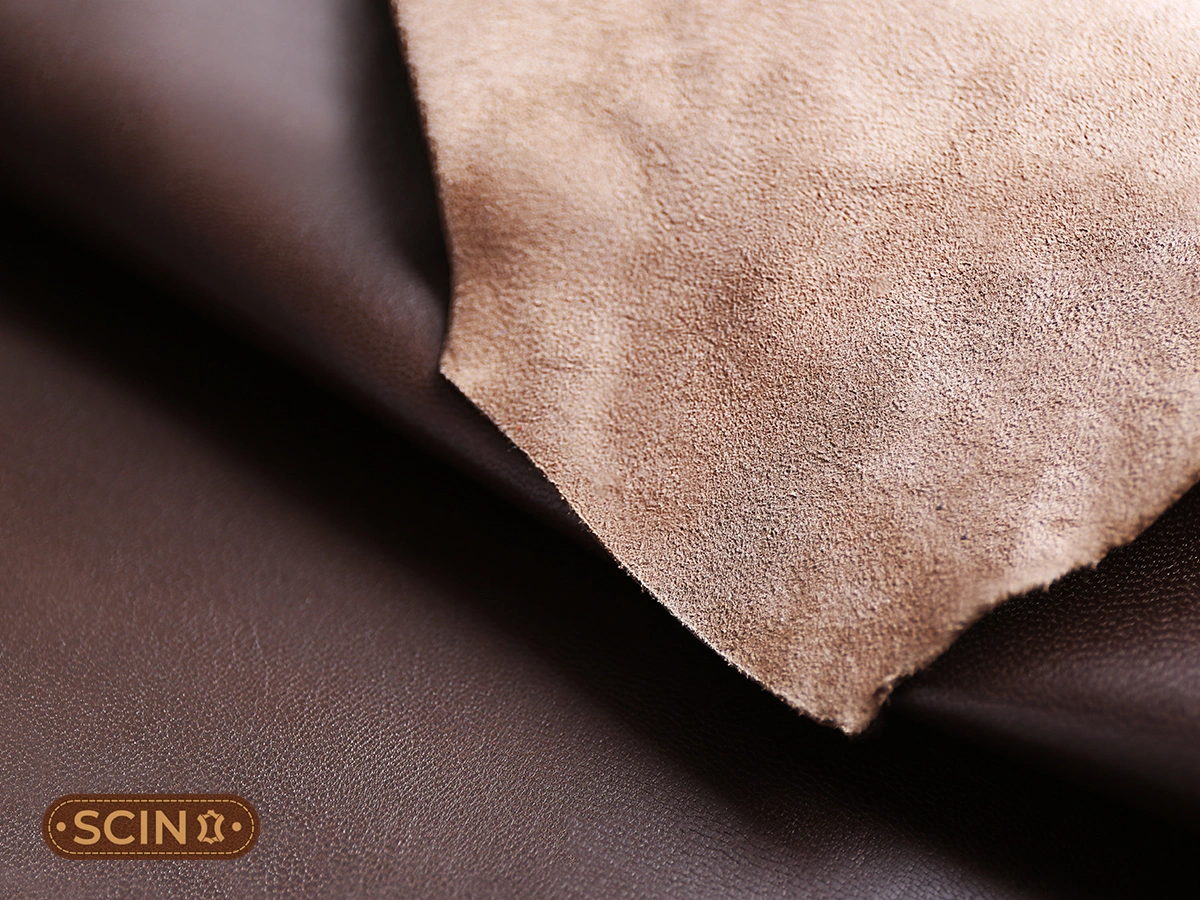
Goatskin Leather
Goatskin leather is very flexible, light, and the one that is not particularly offered with any armature. It is taking the form of gloves, jackets, and bags. Goatskin is also comfortable to wear, and it is easier to break the leather compared to other variants.
It is also quick to become popular in military and biker jackets, which makes it a favorite with all its natural durability to see it through rough use.
Exotic Leathers
Exotic leathers are those that are made out of such animals as crocodiles, ostriches, and snakes. They are often designer items that feature different types of leather, which are costly and exclusive.
The statement pieces that are made with exotic leathers are some of the best due to their distinctive pattern. To keep their look, they need additional assistance, which is usually in line with the household tips on how to distress leather to get a distressed look.
What is Leather Finishing?
Leather finishing is the process of making the surface of the leather exhibit certain Levels of textures and colors, and protection. When you say, What is leather finishing, it is the final part that makes the leather look and feel like what it is.
Various types of leather finishes provide resistance to stains, water, or scratches. The finishing is an added aspect also as you would like to have glossy, matte, or even a natural cover. Finishing contributes significantly to the end product, especially when it involves jackets that people use in their daily lives, which have been finished, and luxury furniture.

Different Types of Leather Finishes
There are many different types of leather finishes, each designed for a unique purpose. Furniture finishes are emphasized towards the natural beauty of leather or protection, shine, or style. The knowledge of these finishes will enable you to select the best type of leather depending on your purposes, be it jackets, shoes, furniture, or bags. Be it soft and natural, a shiny, shiny, it is vital that the leather finish you choose produces a substantial impression on appearance and wearability.
Aniline Leather
One of the most natural finishes is the aniline leather. It is stained with soluble dyes that never go to the deepest part of the hide, or even all the way across its natural grain. With this, the initial impressions, scars, as well as pores remain clear, and each item has a unique appearance. The leather is plush, breathable, and soft to the touch. But due to the lack of any protective coating, it is also more susceptible to stains and scratches. Highly aniline leather may be applied in high-end leather jackets, as well as designer furniture, where an exquisite look is valued much more than heavyweight protection. To serve on a long-term basis, aniline leather can be made to appear its best by taking proper care and learning how to soften such leather jackets.
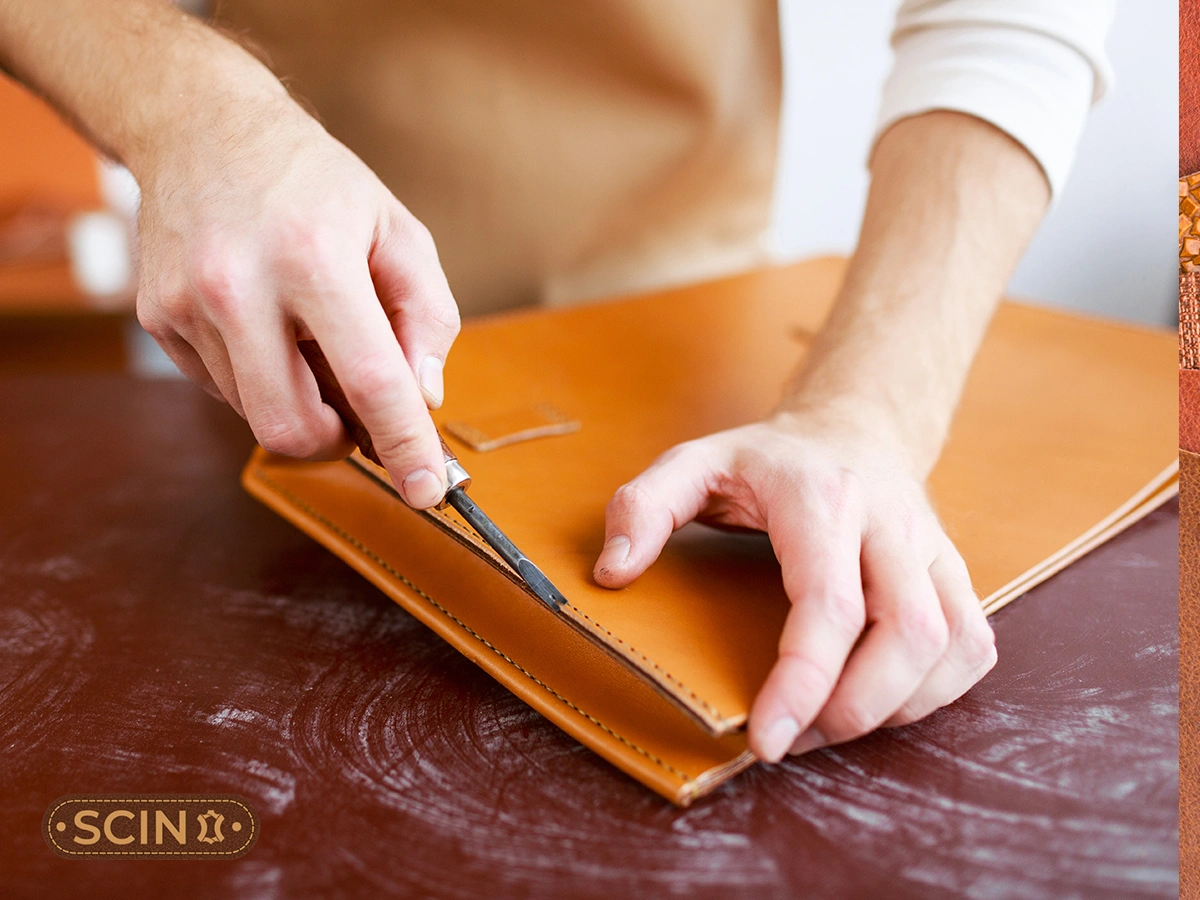
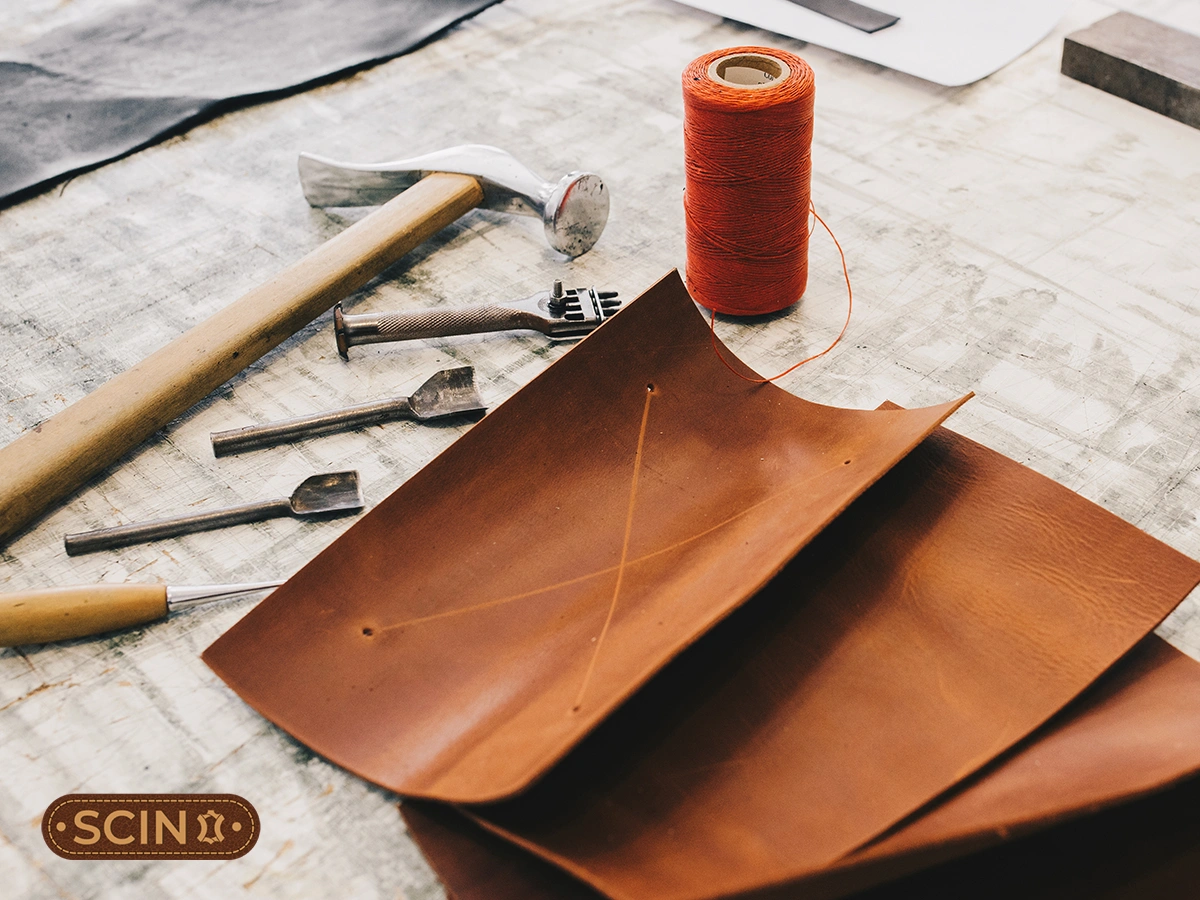
Semi-Aniline Leather
Semi-aniline leather is something that gives a compromise between the look of a natural appearance and the durability. A thin protective coating is used on it and the layer is not so thick that it becomes resistant to stains and fading although much of the genuine texture of the object remains. This sort of finish is regular in superior leather pieces of furniture and fashionable objects, particularly where individuals prefer the natural leather and additional security. Of the different types of leather finishes made on leather, they include; semi-aniline which is said to be one of the most everyday usage finishes as it is found to be resistant and very beautiful.
Pigmented Leather
When it comes to durability, pigmented leather is the go-to choice. This finish has a thicker layer of pigments and polymers applied to the surface, giving it a uniform color and strong resistance to stains, scratches, and wear. Because of its tough nature, it’s widely used in car seats, office chairs, and heavy-use furniture. While pigmented leather may not showcase the natural grain as much as aniline or semi-aniline, it’s highly practical for those who prioritize long-lasting use. If you’re wondering about the best types of leather for active households or busy lifestyles, pigmented leather is often the answer.
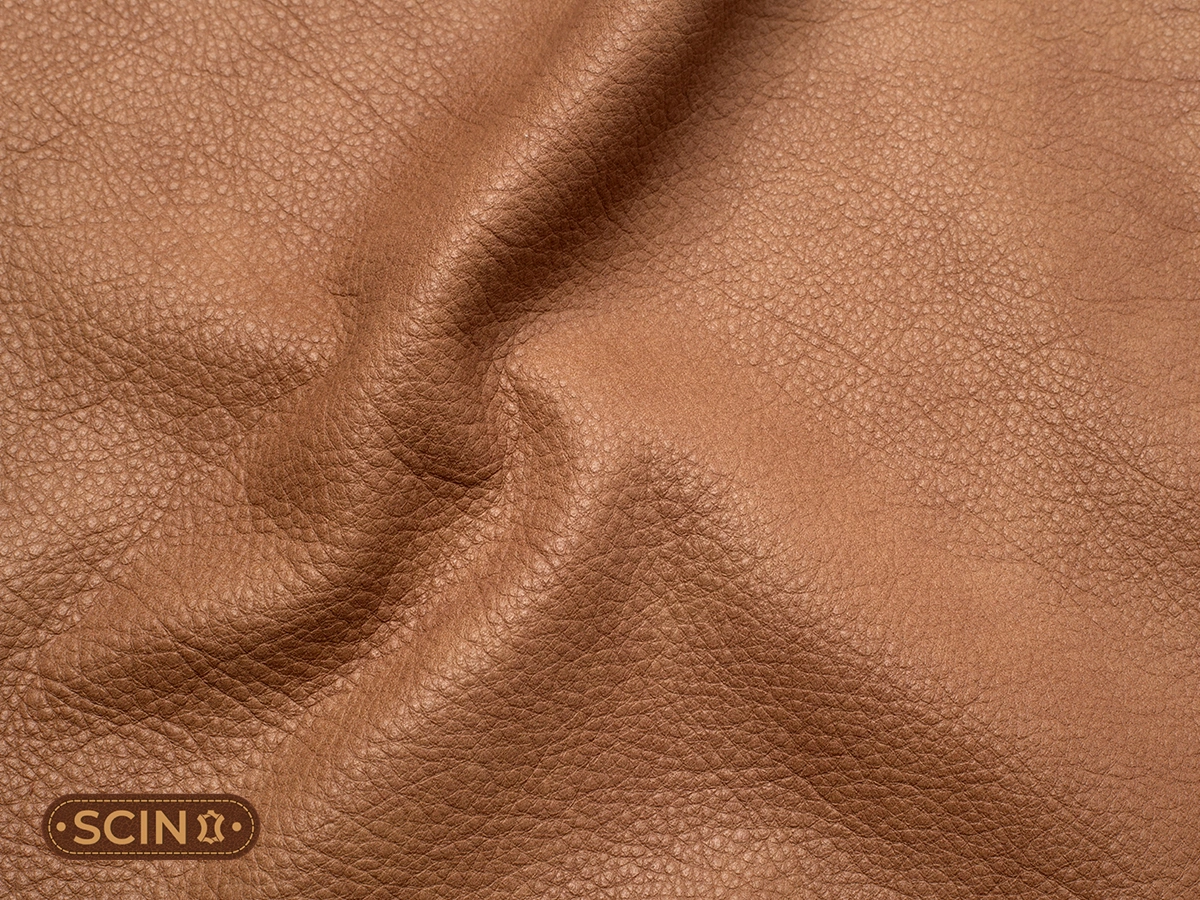
Nubuck Leather
Nubuck leather is a type of finish created by sanding or buffing the outer surface of the hide, which gives it a soft, velvet-like texture. It feels luxurious and looks refined, but it can be delicate compared to other finishes. Nubuck leather is prone to absorbing oils and stains, which is why proper protection and maintenance are essential. Many people compare it to suede, but nubuck tends to be slightly more durable since it’s made from the outer side of the hide. Jackets, shoes, and handbags made from nubuck are stylish but need the same care you’d give when learning how to store leather jackets to prevent damage.
Suede Leather
Suede leather is another type of leather finish, made from the underside of the hide. It has a fuzzy surface, giving it a casual and stylish look. Suede jackets are popular but need extra care, similar to how to store leather jackets. Suede jackets and boots are timeless fashion staples, but like nubuck, suede is sensitive to water, dirt, and stains. Regular cleaning and waterproof sprays are recommended to keep it in good condition. For fashion lovers, suede represents one of the most stylish yet delicate leather types, often paired with casual outfits for a relaxed but trendy vibe.
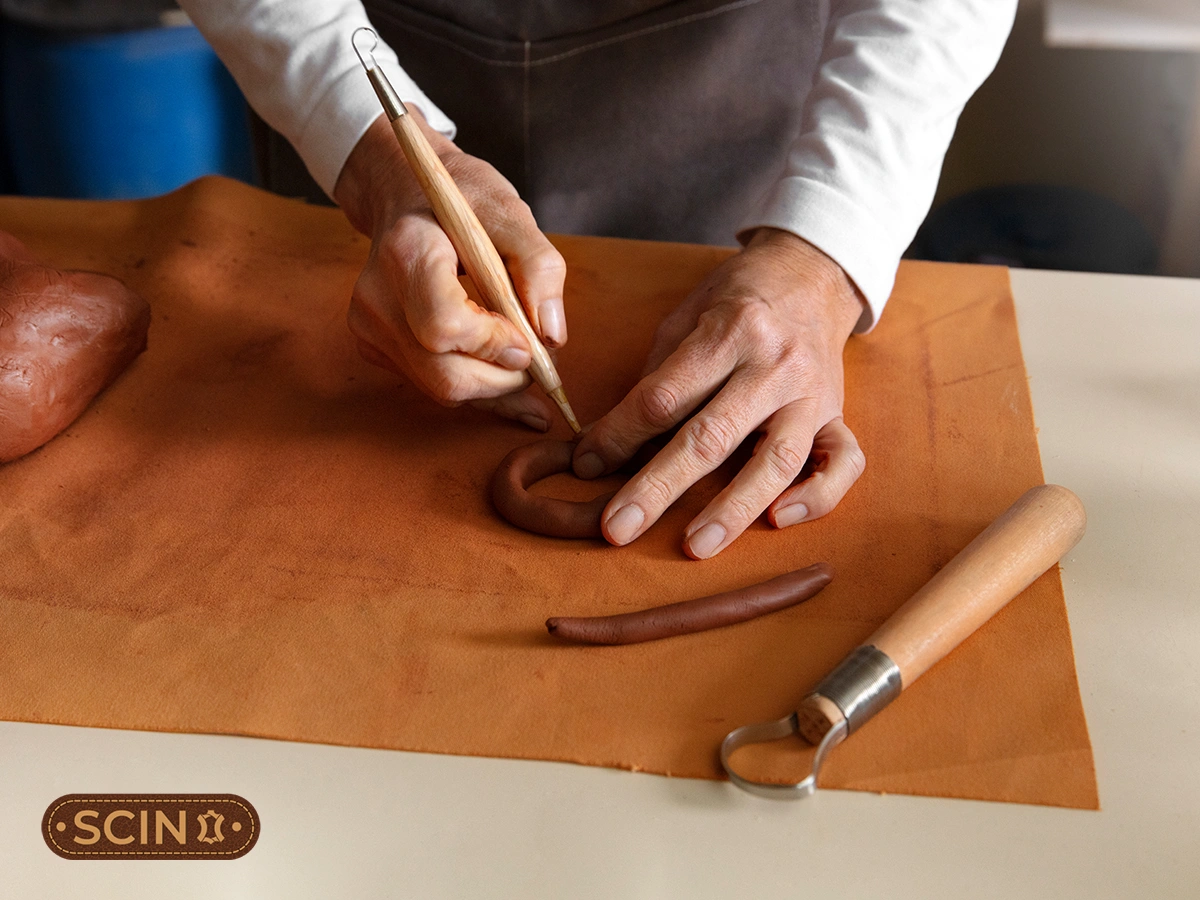
Patent Leather
Few finishes make a stronger statement than patent leather. Known for its mirror-like glossy shine, patent leather is coated with a layer of varnish or lacquer, making it stand out instantly. It’s commonly used in formal shoes, handbags, belts, and accessories, adding sophistication to evening wear and fashion events. While durable in terms of shine, patent leather can develop cracks over time if not stored properly. To preserve its bold appearance, proper care and storage are key. For example, reading guides on how to store leather jackets can help you adapt similar practices for patent leather items.
Pull-Up Leather
Pull-up leather is a finish that develops character over time. It’s treated with oils and waxes that move around the hide when the leather is stretched or bent, creating lighter areas that add a rugged, vintage look. This is why pull-up leather is loved by those who prefer leather that tells a story as it ages. Commonly used in casual boots, jackets, and messenger bags, this type of finish is often associated with an adventurous and outdoor lifestyle. Over time, pull-up leather develops a distinctive patina, imparting a rich, aged character that many leather enthusiasts appreciate.
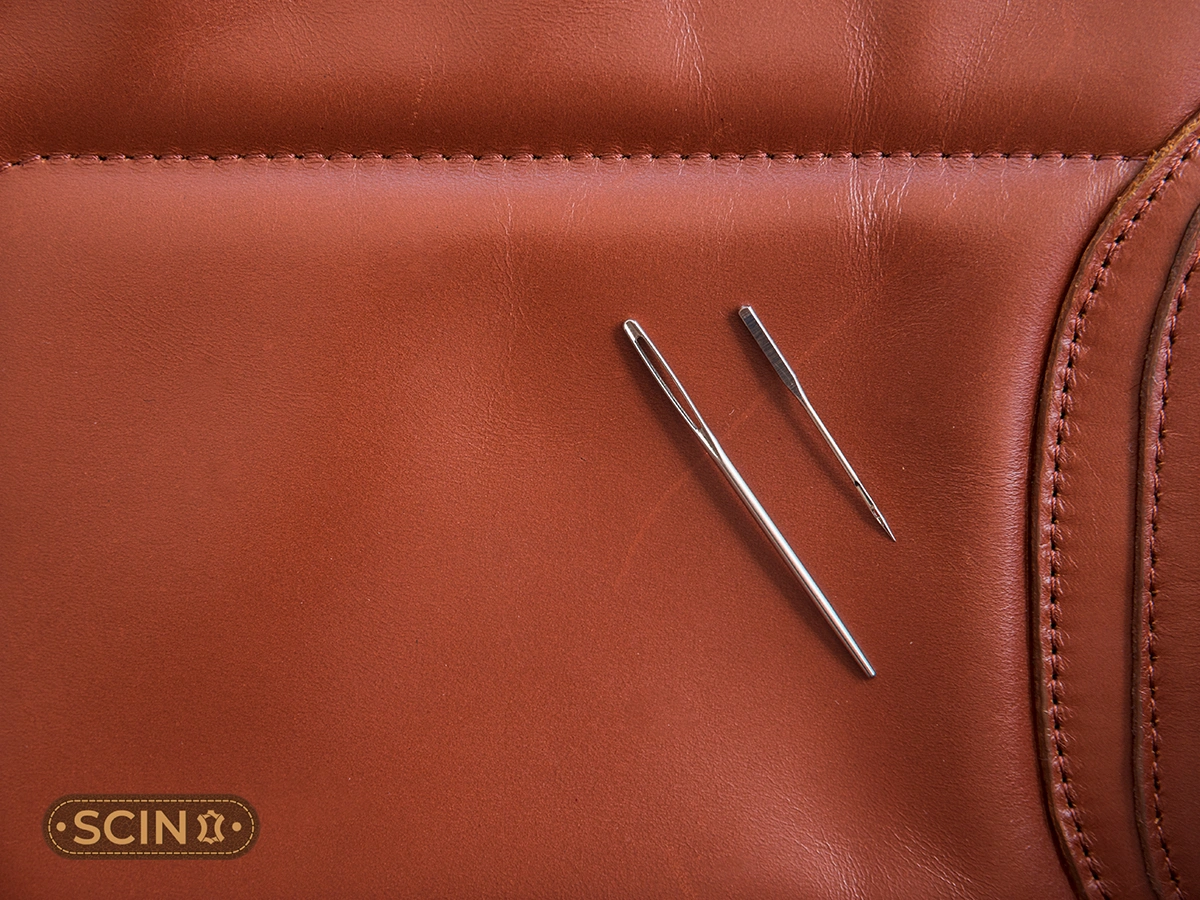
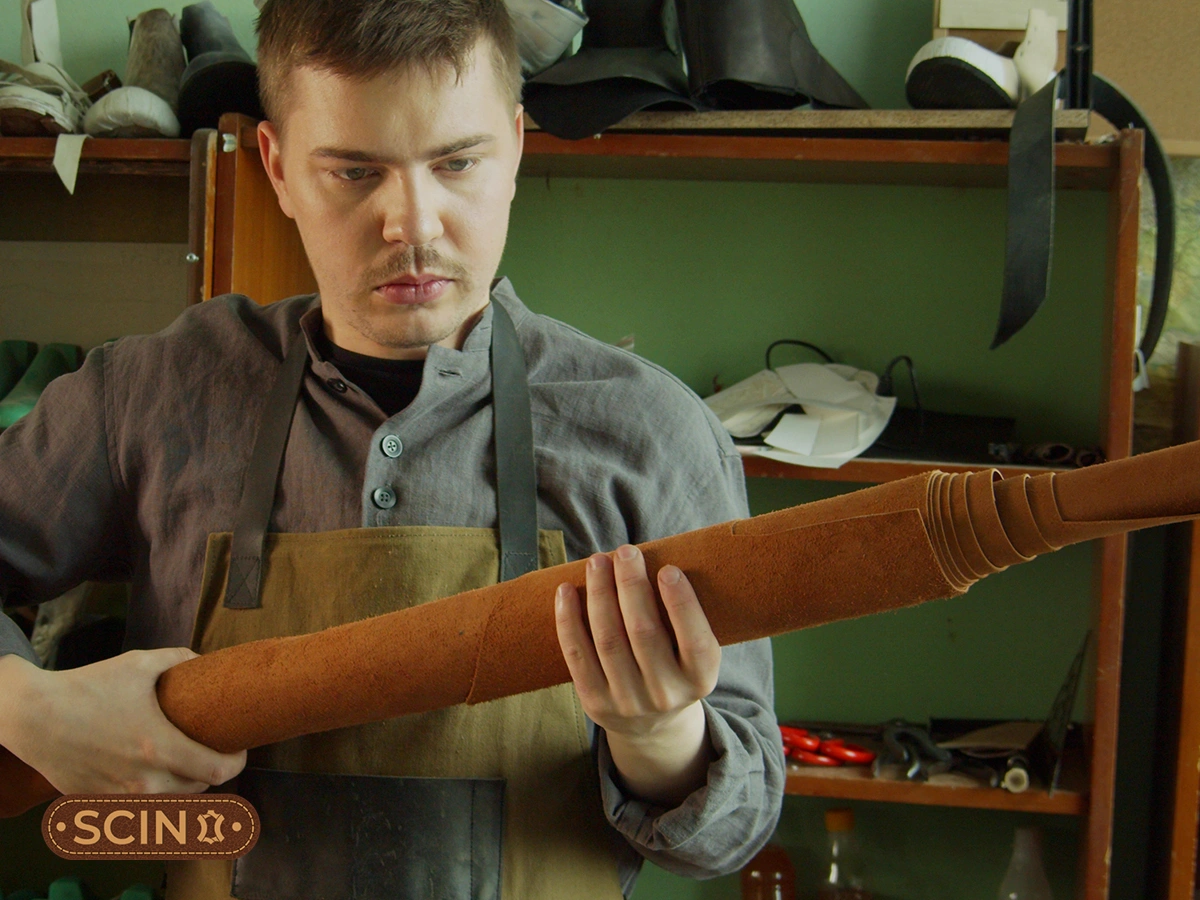
How to Choose the Right Type of Leather & Leather Finishes
Choosing the right leather type depends on your needs. If you want maximum durability, go for full grain leather. For budget options, genuine leather or bonded leather might be better. If you prefer cruelty-free options, faux leather is a great choice.
Similarly, types of leather finishes matter; for example, aniline leather gives a natural look, while patent leather offers a glossy shine. Think about where and how you’ll use the product before deciding. And remember, proper care, like how to soften leather jacket or how to store leather jackets, ensures your leather stays in top shape.
